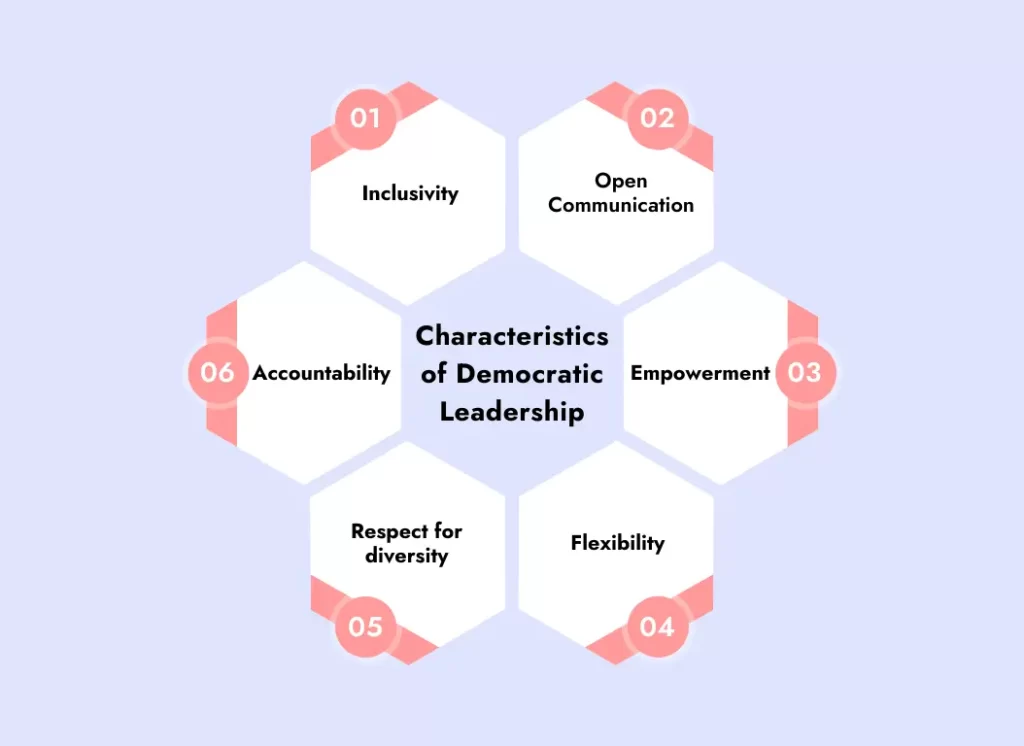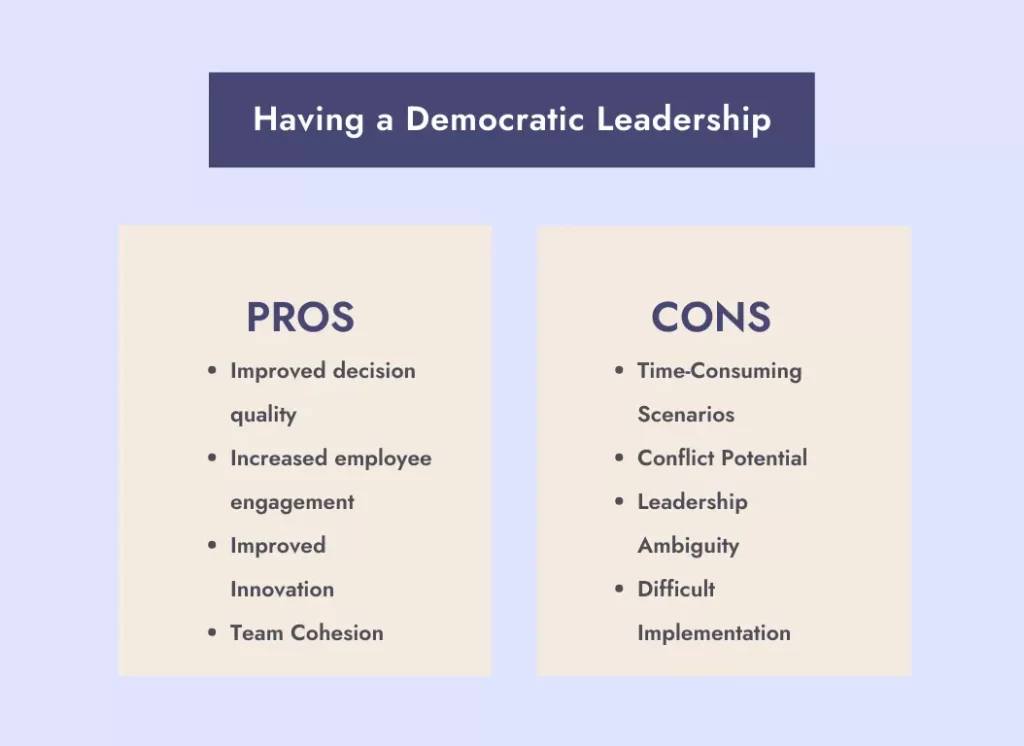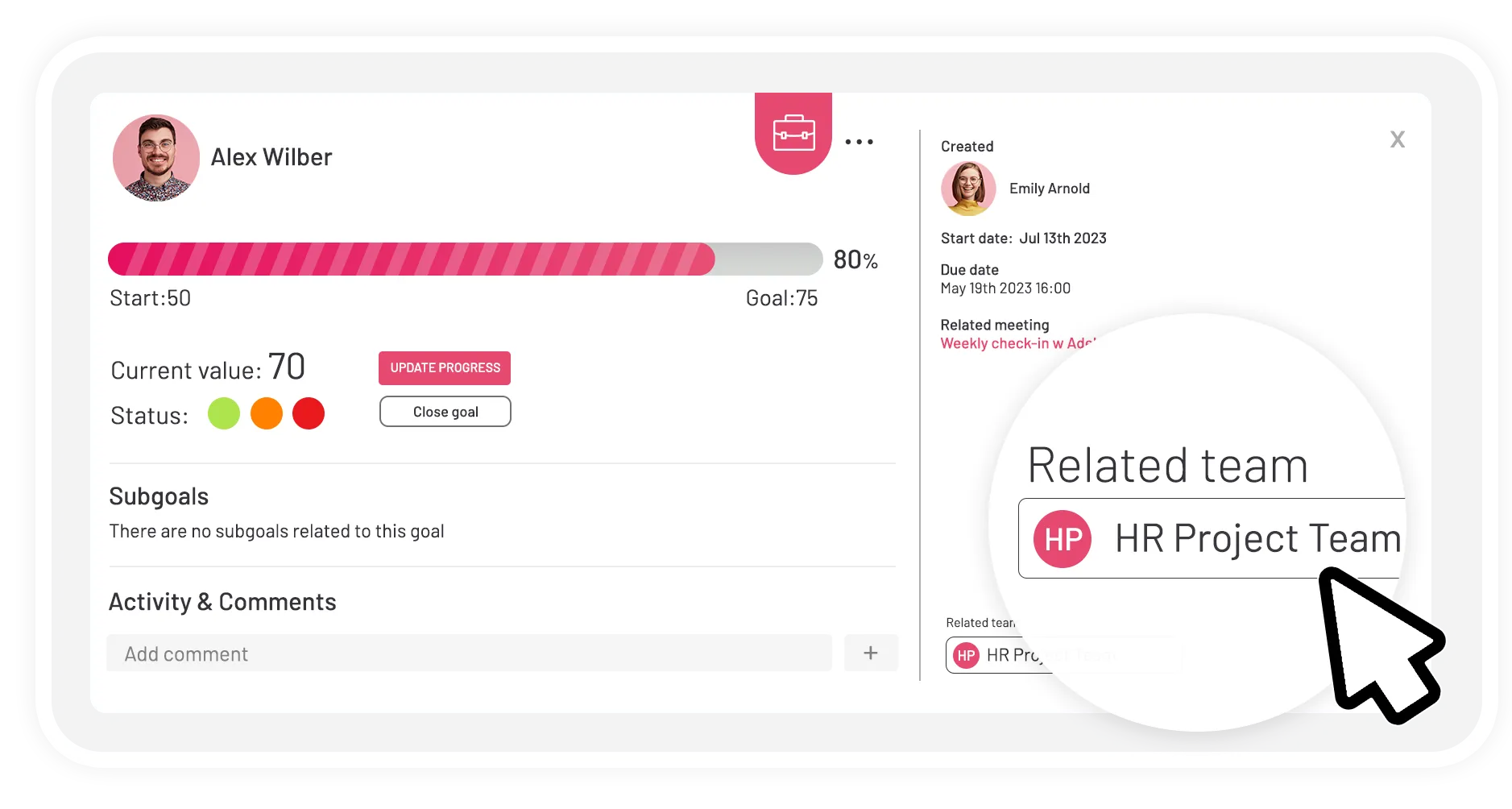The business world today requires a level of understanding of leadership that is more well-rounded and detailed than it ever needed to be.
If you think about it, it isn’t that hard to see why. There are so many levels to how humans work nowadays and a thorough understanding of what your teams’ and organization needs in terms of the type of leadership that you will embody is crucial in reaching your goals.
When it comes to a democratic leadership style, a diverse range of perspectives that play a part in the decisions made in an organization immediately comes to mind.
Let’s understand what a democratic leadership style is together and take a closer look at its characteristics.
Table of Contents
What is democratic leadership in the workplace?
The definition of democratic leadership style is a shared decision-making process amongst team members regardless of rank. With this style, open communication is clearly encouraged and all team members have a say in how strategies are made.
A democratic leader’s role in this is to facilitate collaboration and empower their team members in a way that they are engaged and motivated as opposed to an authoritarian leadership style.
A very clear indication of a democratic leadership style is the distributed power. While this leadership type can lead to longer discussions around certain topics, the inclusivity it provides will also allow for better-informed decisions and a team that is more invested in the outcomes of their decision-making.
The Characteristics of Democratic Leadership
There are certain characteristics that you can look out for in order to identify what democratic leadership will look like in the workplace. Here are a few:
Democratic Leadership Style Characteristics

- Inclusivity: A cornerstone of democratic leadership, inclusivity is a natural byproduct of this approach. Leaders with this style seek input and feedback which automatically strives to include all team members.
- Open Communication: Democratic leadership calls for open communication, as without it, it is impossible to equally include all voices in the discussions of your operations.
- Empowerment: It might seem like we are repeating ourselves but once you have an inclusive space that is powered by open communication, it is only normal that you are able to empower your team to be more involved and engaged. It is also a splendid way to keep your employees satisfied with their jobs.
- Flexibility: This is an approach that you can implement in many different settings which allows you to recognize the importance of flexibility and agility in decision-making. Democratic leadership tends to keep the door open for any adjustments when necessary.
- Respect For Diversity: Democratic leaders will appreciate diversity in any way, whether it is skills, experiences, or backgrounds. They will be equipped to recognize that each perspective is equally valuable in coming up with comprehensive solutions.
- Accountability: Even though there is a collective effort in this approach, democratic leaders will still maintain accountability. This is what ensures the focus on the goals that need to be achieved in the entire process.
Overall, the democratic leadership style will emphasize a collaborative understanding of effort and responsibility.
There is a clear sense of value and empowerment in teams that are led this way, which ultimately helps the wellness of the workspace and the achieving of long-term goals.
The Pros & Cons of Democratic Leadership Style
As with everything in life, the democratic leadership style also comes with its better and worse sides. Let’s list some for each.

Pros of Democratic Leadership Style
- Improved Decision Quality: The involvement of diverse team members in your decision-making process will give you perspectives that are looking at the matter at hand from different viewpoints. This will give you a more thorough understanding when you’re making your decisions.
- Increased Employee Engagement: A natural outcome of this approach is that since all employees are involved, they are more engaged and invested. This is especially helpful in terms of job satisfaction.
- Improved Innovation: The collaborative characteristic of democratic leadership fosters creativity and uniqueness as a variety of perspectives are involved and able to inspire each other.
- Team Cohesion: The inclusive nature of this approach fosters a sense of unity and stronger team bonds that create a sense of “We’re in this together.”.
Cons of Democratic Leadership Style
- Time-Consuming Scenarios: Looking to get input from all members, while it can help make a quality decision, can also be time-consuming depending on team size and discussion time. This can potentially hinder how on track you are to reach your objectives.
- Conflict Potential: In times when differences in opinions inevitably arise, the democratic approach may have a harder time defusing such potential conflicts. Especially in times of crisis, such conflicts may be even more challenging.
- Leadership Ambiguity: This level of inclusive collaboration may leave some ambiguity on whether there is any leadership in place and if there is any clear direction and guidance towards goals.
- Difficult Implementation: Adopting this style may be challenging as it requires a certain level of commitment to openness and inclusivity. In some organizational contexts, this may be harder to achieve especially in the longer time frame.
While democratic leadership is a highly effective approach, it is important to remember to always consider your own unique situation and see if it’s actually a good fit for your team and organization.
Understanding how this leadership style can be of use to you and making sure to have a good balance between collaboration and effectiveness is the key to thriving with the democratic leadership style.
Tools For Democratic Leaders
Before we end this post, here are our suggestions for tools that you can use if you are a democratic leader:
- Teamflect
If you want to have a strong tool at work that can help you include all of your team’s views in your decision-making, Teamflect is the one!
Teamflect will assist you with goal setting, customized tasks and meetings, 360-degree feedback and surveys and so much more. It is an all-in-one performance management solution that will make sure you and your team thrive!
Use Teamflect inside Microsoft Teams today and start leading your team inclusively, and effectively!



